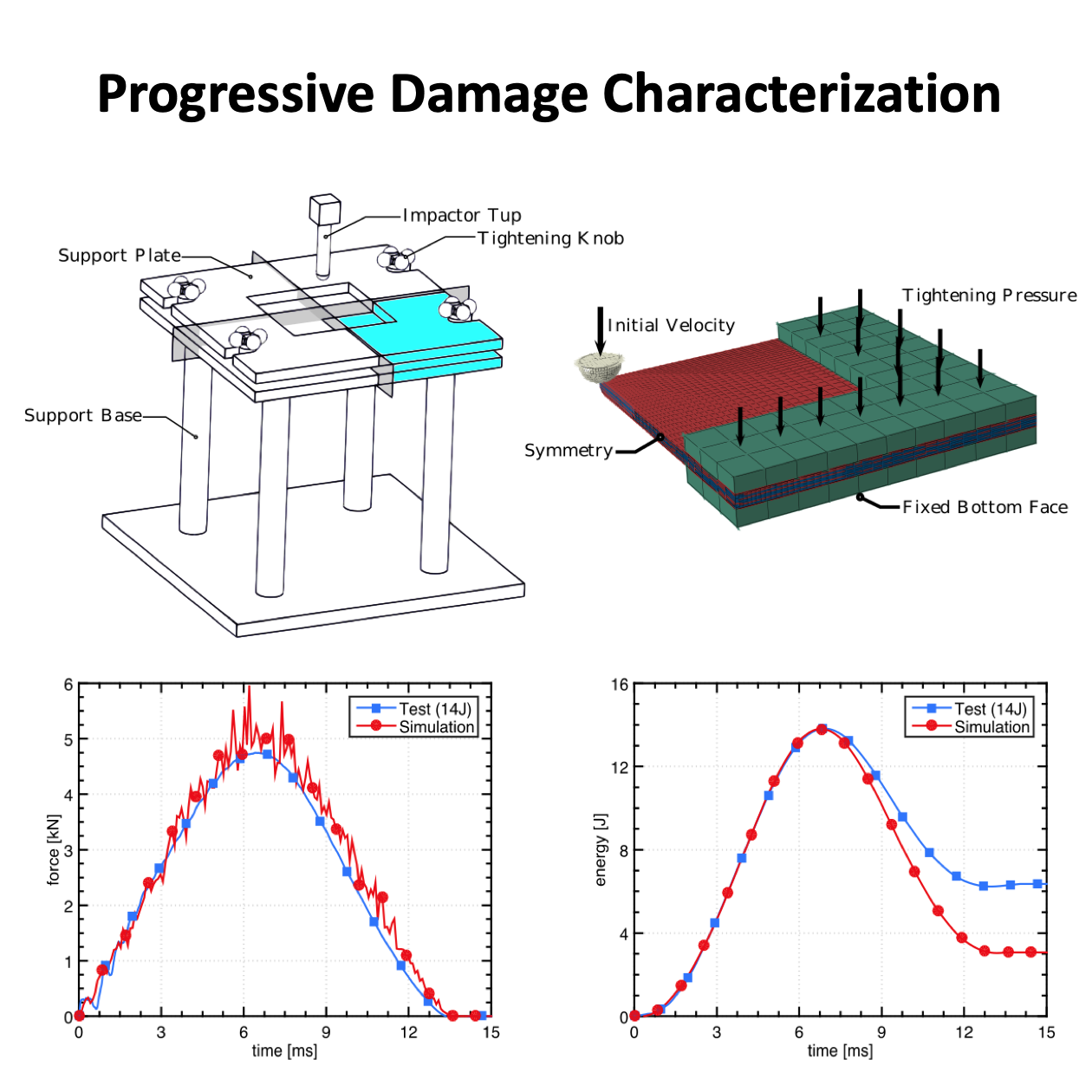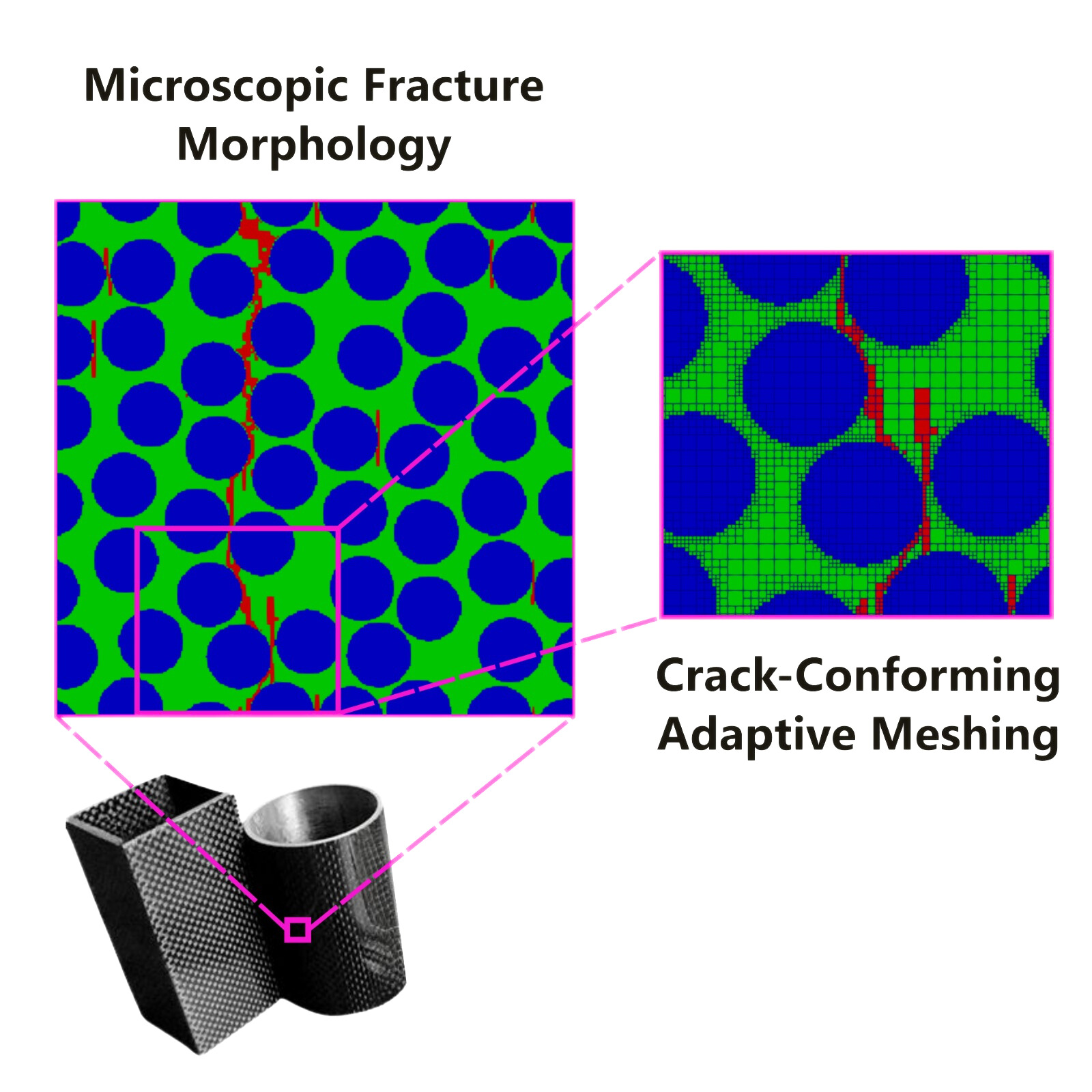
 Impact Mechanics of Composite Materials
Impact Mechanics of Composite Materials
Our research focuses on building high-fidelity yet computationally efficient frameworks to predict the complex impact response of composite materials across all velocity regimes. For low-velocity impacts, we advance beyond conventional single-event studies to model both multi-site and repeated impact scenarios, capturing how impact energy, the number of strikes, and material recovery influence cumulative damage evolution. These effects are quantified using Gaussian Response Surface Methods in combination with advanced finite element models that incorporate our elasto-plastic damage and cohesive zone formulations. For high-velocity impacts, we develop analytical-computational approaches to explicitly solve wave propagation in layered media, supported by a custom wave-tracking code that resolves Riemann problems and provides insights into spall damage, interface debonding, and shock interactions. By integrating such high-fidelity simulations with reduced-order analytical and meta-models, our work delivers scalable, predictive tools that bridge constituent-level damage to structural failure, enabling the robust design of future impact-resistant composite systems.


